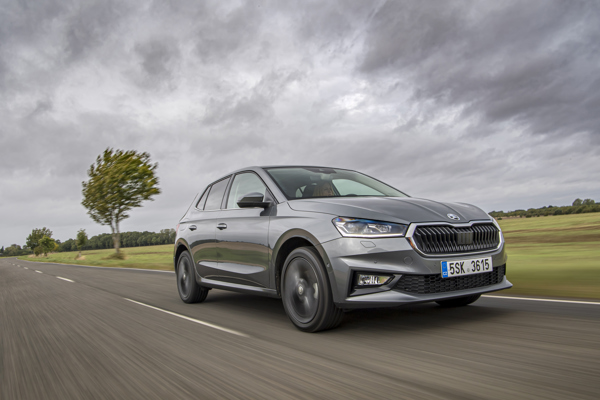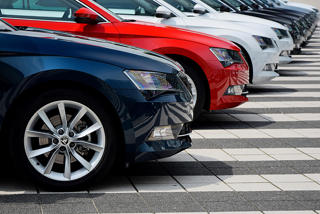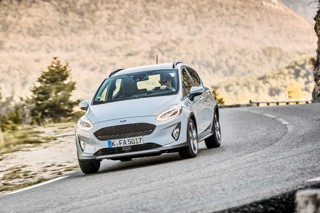Review
February 2019
Ford’s head of fleet Owen Gregory last year declared that the latest Focus is the best car the manufacturer has ever built.
Time – and others more qualified than me - will be the judge of that but I would say that, based on our long-term test of the latest Fiesta, it is going to have to be pretty special to be better than its supermini sibling.
Over the seven months the Fiesta spent on our fleet, covering 13,377 miles, it proved to be an excellent companion, proving itself to be stylish, well-built, practical and engaging to drive. Overall fuel economy was 45.1mpg, compared to an official combined figure of 60.1mpg. CO2 emissions are 111g/km.
Our model was in ST-Line trim, which features 17-inch alloy wheels, front fog lights, a bodystyling kit and a large rear spoiler.

Its purposeful appearance is backed up by the driving experience. Its 1.0T 125PS petrol engine revs smoothly to deliver peppy performance, while its sports-tuned suspension strikes a nice balance between comfort and dynamism.
This is enhanced by its well-weighted, direct steering, and a precise, light gearshift. It really is an excellent example of a warm hatch.
However, over bumpy, undulating roads, the ride can be a bit too firm, so drivers who favour comfort over a sporty driving experience should consider other trim levels such as Titanium, which feature softer suspension.
Elsewhere, the Fiesta has all the attributes you would expect from a class-leading supermini. It’s practical and well built, while the Sync 3 infotainment system, operated through a 6.5-inch touchscreen, was capable and easy to use.
Apple CarPlay and Android Auto connectivity meant the lack of standard sat-nav was no problem, and other standard equipment includes heated front windscreen, lane-keeping aid, auto headlights and sports seats.
Overall, we’re sorry to see the Fiesta go, but as it is being replaced by a Focus, we’ll be well placed to put Gregory’s statement to the test.
January 2019
A company car driver who regularly needs to carry large loads or rear-seat passengers is unlikely to either choose or be issued with a supermini.
While they typically have lower P11D prices, emissions and fuel consumption than larger cars, benefiting both the driver and employer, day-to-day life will be compromised.
But those factors don’t apply to me and a supermini – such as the Ford Fiesta I’m currently running – is well matched to my needs.
For more than 90% of my time behind the wheel, the rear seats have not been used and I’ve probably put shopping in the rear footwells more often than people have sat in the back. When I have, they’ve always said they’ve got ample room.
However, when you’re running a compact car, there will probably be occasions when having more space would make life a little easier.
For me, one of those came up earlier this month when I went to pick up a new bicycle.
The Fiesta’s boot is a competitive size its class – its volume of 292 litres with the rear seats in place and 1,093 with them folded is smaller than that of the Seat Ibiza (355/1,165), but larger than the Volkswagen Polo (280/952) – but understandably I needed to fold the rear seats down to accommodate the bike.
This was simple to do – just pull two levers in the top of the seat backs and they flop down. It doesn’t create a flat load floor though, as there is a 20cm drop from the boot lip to the boot floor, before a 10cm step up to the folded seat backs.
This wasn’t an issue for me, as after I’d removed both wheels from my bike, both they and the frame sat nicely on top. Looking back, I’m confident it would have fitted in if I’d removed only the front wheel.
Of course, a larger car with a flat load floor and lower boot lip would have been better suited to this task, but the Fiesta showed that, when needed, a supermini can be surprisingly practical.

December 2018
The latest generation Ford Fiesta is proving a big hit with fleets. The latest SMMT (Society for Motor Manufacturers and Traders) figures show that to the end of November, it is the second-best selling car in fleet, behind the Volkswagen Golf.
It’s also proved to be a popular member of our long-term test fleet. ‘Our’ ST-Line has covered 10,000 miles since we started running it at the end of June, and it has impressed all who have driven it.
I’m also a big fan: it looks great, the handling is just right – a balance of sportiness and refinement – while the interior, which was probably the weakest aspect of the previous Fiesta, is now among the class best.
Since we took delivery of our car, Ford has made the the optional eight-inch infotainment screen (£350) standard, which enhances the cabin’s premium feel.

The display is crisp and, as well as functions such as digital radio and Bluetooth phone connectivity, it also offers Apple CarPlay and Android Auto, which allow you to connect your smartphone and use apps through the car’s infotainment controls.
This has proved to be a real boon. I’ve used it mainly for navigation through Google Maps and for audio through the Amazon Music and Pocket Casts apps.
Setting up Android Auto was straightforward and the navigation, in particular, has impressed, especially the clarity of the maps, the real-time traffic updates and how quickly it suggests alternative routes if there are any problems.
It makes me wonder for how much longer fleets will pay extra to have sat-nav systems fitted as optional equipment to cars, when an equally effective alternative is available for free.
November 2018
The Ford Fiesta comes with a number of handy features to make life easy for the driver.
One of our favourites is the heated front windscreen, which comes as standard on the ST Line model.
It’s a feature a number of other manufacturers neglect to offer, even in the premium segments, but it is crucial as winter draws closer.
Heated seats are, unfortunately, an option that we forgot to add, having ordered the car in the spring.
They come as part of the comfort pack, which includes a heated steering wheel, and costs an extra £250.
It isn’t so much of a bother though as the petrol engine gets up to temperature quickly and the car is toasty within minutes of starting.
One feature we did add was the door edge protectors. Costing just £100, these clever devices extend from the door edge when the door is opened to protect the lip.
When you close the door they disappear. It’s a great way to avoid potentially costly damage recharges at the end of a lease.

Similarly, the electric folding door mirrors, which come bundled with the rear parking sensors (£350), are another useful option – again helping to avoid unnecessary damage.
The Fiesta also benefits from Ford’s Easy Fuel system, which prevents misfuelling. It does without a traditional fuel filler cap helping to make fill-ups quicker and less messy.
October 2018
Our Fiesta has already amassed 5,000 miles since joining our fleet just three months ago, proving how popular and capable the new model is.
It’s taken various member of the Fleet News team all over the country on various assignments, and not a single user has come back with serious complaints.
In ST Line trim, the car sports larger 17-inch alloy wheels and firmer suspension. While this would ordinarily be a recipe for a disastrous ride, the Fiesta feels stable and confident.

Opinions in the office are split as to whether the ride is a tad too firm, but the car happily covers motorway miles without inducing fatigue.
Once you hit country lanes the car’s real party piece is unveiled. Its handling is absolutely best-in-class with steering that should be used as a benchmark by all manufacturers.
The potent three-cylinder engine emits a throaty growl as you work it through the very slick six-speed gearbox, settling down to an almost silent cruise.
The car isn’t without its foibles though. Our main criticism is the small door mirrors, which provide little rearward visibility. Luckily our car is fitted with blind spot monitoring – something we highly recommend to mitigate this issue.
Another gripe is, despite its £22,000-plus price, our Fiesta lacks a driver’s armrest. To get one you have to go for a Titanium model or the more expensive ST Line X.
Keyless start is standard but you do have to use the key fob for entry, which to us seems inconvenient.
Ford’s promise of 60.1mpg has yet to become a reality for us, as the car continues to average around 43mpg.
The figure rises closer to 50mpg on motorway runs but we found our Seat Ibiza long-termer was a little more frugal than the Fiesta overall, achieving an average 48mpg.
Niggles aside, the Fiesta is continuing to prove to us why it is the UK’s best-selling car. It is stylish, easy to drive and spacious and living with it is an absolute pleasure.
Matt de Prez
August 2018 - 40th birthday special Fiesta 1.0 Ecoboost and 1977 Fiesta L comparison
Two years before the first issue of Fleet News landed on the desks of fleet decision-makers, Ford had launched its all-new Fiesta in Europe – with UK sales beginning a year later in January 1977.
Built as a result of the oil crisis, demand for a small, economical front-wheel drive car was high.
The progress of the Fiesta since has been unstoppable. Three years after its launch one million Fiestas had been sold and in 2014 it became the UK’s best-selling car ever.
It’s easy to see why people love the Fiesta. It’s stylish, compact and great to drive – but more importantly, it’s inexpensive.
The chances of seeing an original Fiesta on the roads now is pretty slim, but Ford does have an original model housed at its “holy grail” storage facility in Dagenham.
Nesting between a Ford GT and a Sierra Cosworth is a 1977 Fiesta L with just 44,000 miles on the clock.
For some, the opportunity to drive a 1977 Ford Fiesta would seem a nostalgic look back at the “good old days” of motoring. For me – whose parents were barely teenagers in 1977 – it was like stepping into another realm.
“Watch the brakes,” was the only advice I was given before setting off in this time warp classic.

Of course, setting off isn’t as easy as it is today. In our new Fiesta you simply push the ‘start’ button. In the classic Fiesta you have to engage the choke first.
The 957cc engine took a few turns to start but, once it burst into life, it was idling as happily as our 2018 Ecoboost-powered model.
What surprised me was just how easy the original Fiesta was to drive. Sure, it doesn’t have power steering or even a radio, but the controls were light and precise and visibility was excellent.
It quickly became apparent that no matter how good a new car is, nothing quite manages to capture the character of something from four decades ago.
You do feel more vulnerable in the older car though. Its brakes really do take an age to stop it and you sit much lower and closer to the road than in most modern cars.
In 1978, the Fiesta cost less than £2,000 – around £10,500 in today’s money.
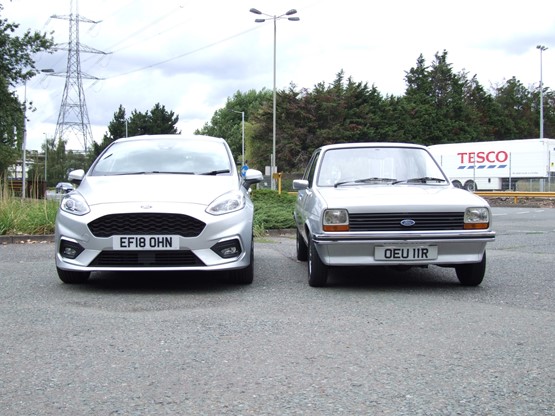
In mid-range L specification, Fiesta drivers enjoyed luxuries such as chrome exterior trim, a reclining seat, heated rear window and halogen headlamps.
Like our new Fiesta, the original uses a 1.0-litre petrol engine. It develops just 45PS, but weighs less than 750kg.
In contrast, the new Ecoboost engine has one cylinder fewer and makes 125PS. It does have to carry double the weight of the original car, however.
It also costs double the price. With a few ‘goodies’, our test model costs £20,500.
Driving the two cars back-to-back showed just how far the car industry has evolved in 40 years. On the motorway, the new Fiesta is quiet and refined.
It has autonomous braking, adaptive cruise control and a little light in the door mirror to alert you of a car in your blind spot.
The original car has one door mirror and it relies on the driver much more. You get a raw feeling of being in control, something that new cars lack.
Matt de Prez
July 2018 - first test
We’ve been waiting patiently for our new Fiesta long-termer since April. The car has taken 14 weeks from order to delivery, as Ford is enjoying strong demand for the all-new model.
The outgoing Fiesta held the title as the UK’s best-selling car for eight years, so we looked forward to finding out if the new one can live up to the reputation.
When choosing our car we faced a choice of 17 versions, two body styles and 10 engine and transmission options.
We plumped for Ford’s expected best-seller, the sporty ST Line with five doors.
It comes packed with standard kit, including: automatic headlights and wipers, lane-keep assist, a heated windscreen and keyless start.
In addition to the basic specification, 18 options are available to enhance the Fiesta further. We added parking sensors (£350), a rear-view camera (£250), blind-spot monitoring (£475) and the Driver Assistance Pack (£400) which includes adaptive cruise control.
The Moondust Silver paint (£450) has not been a popular choice with colleagues, but the Fiesta still looks great in ST Line trim with its larger (17-inch) alloy wheels and subtle body-styling kit.
Diesel Fiestas are the most frugal, but petrol versions promise the best balance of running costs. We decided on the mid-range 125PS version of Ford’s 1.0-litre Ecoboost petrol engine with a manual gearbox.
This bought the total price of our car to £20,405 OTR.
According to Ford, we can expect average fuel consumption of 60.1 mpg - which equates to CO2 emissions of 111g/km.
Since taking delivery, the Fiesta has achieved an average of 42mpg – close to the Equa Index figure of 45.8mpg - but we will need to let the engine bed in before we can make further comment on the economy.
Performance from the three-cylinder turbocharged engine is great.
The extra 25PS is noticeable when compared to the entry-level 100PS version. Zero to 62mph takes 10 seconds and the Fiesta delivers strong in-gear pace with 170Nm of torque.
Matt de Prez
Specs
| Manufacturer | Ford |
| Model | Fiesta |
| Specification | Fiesta Hatch 5Dr 1.0T EcoB 125 SS ST-Line 6 19MY |
| Model Year | 0.00 |
| Annual VED (Road tax) | £0 |
| BIK List Price | £18,365 |
| CO2 | 111g/km |
| BIK Percentage | 26% |
| Insurance Group | N/A |
| CC | N/A |
| Fuel Type | Petrol |
| Vehicle Type | Small car |
| Luggage capacity (Seats up) | 5litres |
Running Costs
| P11D | £18,365 |
| Insurance group | N/A |
| Fuel Type | Petrol |
| Cost per mile | 54.59ppm |
| Fuel | 10.30ppm |
| Depreciation | 42.70ppm |
| Service maintenance and repair | 1.59ppm |
Rivals
Info at a glance
-
P11D Price
£18,365
-
MPG
47.9 -
CO2 Emissions
111g/km -
BIK %
26% -
Running cost
3 Year 60k : N/A 4 Year 80k : N/A -
Fuel Type
Petrol













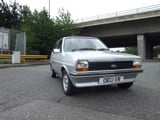





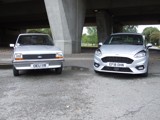
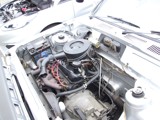








 Petrol
Petrol




